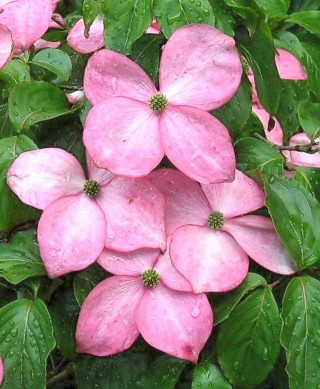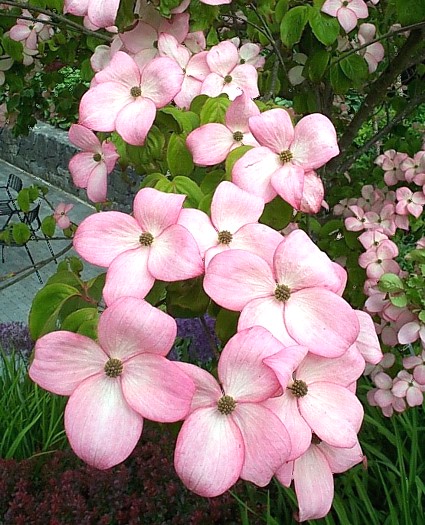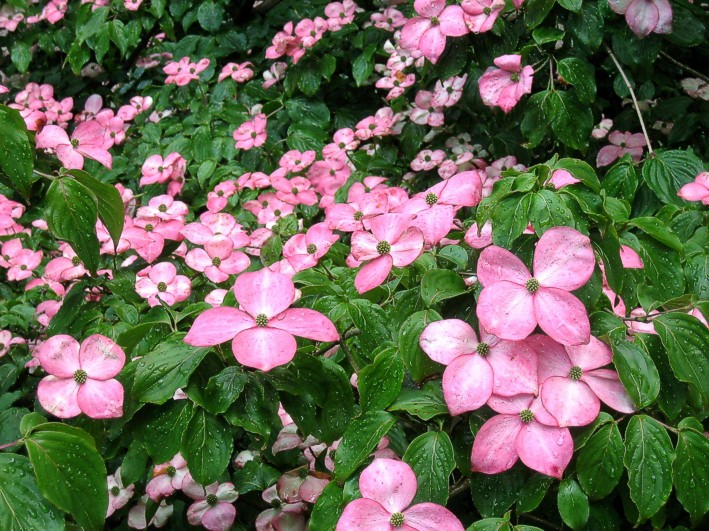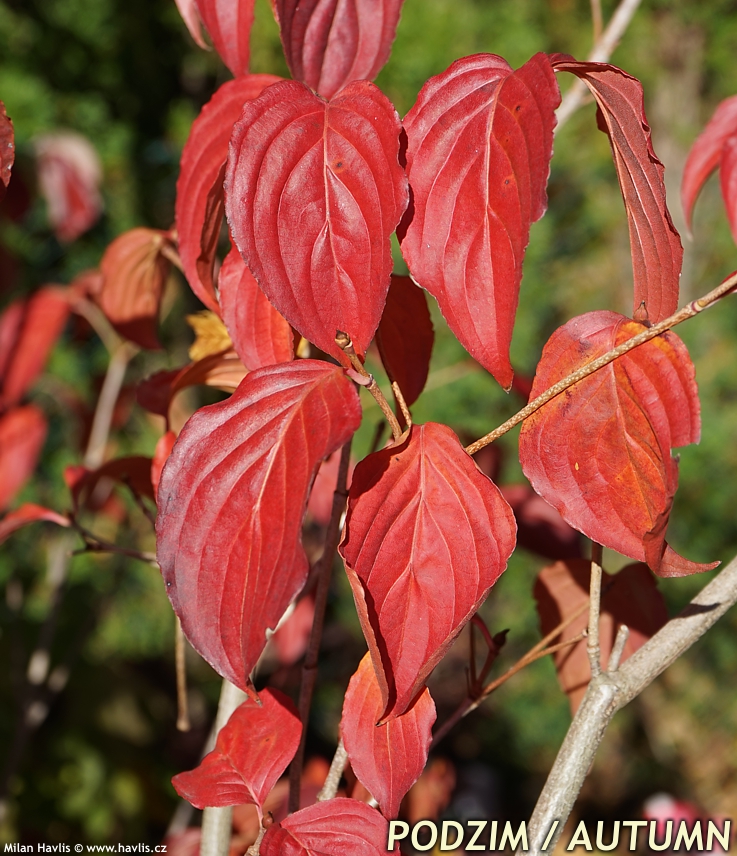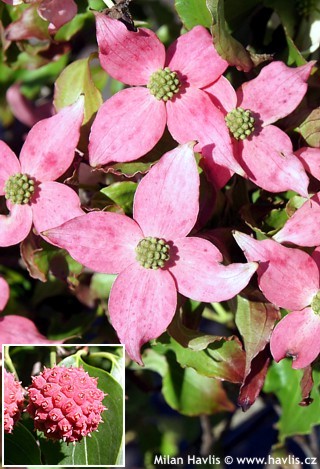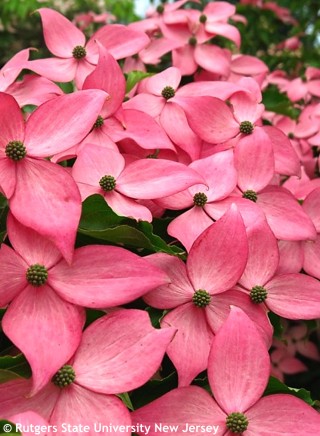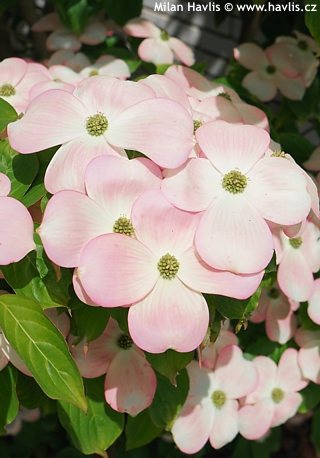Cornus kousa 'SATOMI' Japanese dogwood, Satomi dogwood
Cornus
Japanese dogwoods are very popular shrubs in our climate because thy have unusual flowers and habit and are fully hardy here.
“Satomi” is the most sought after variety among the Japanese ones. Its flowers are of light to deep pink colour that is unevenly spread throughout the flowers. Technically, they are not flowers but 4 flower bracts composed around small flower heads. They are up to 10 cm wide and conspicuous as they come out in June when the shrub is fully leafed, making them a dense, green background. Freshly transplanted plants may temporarily change its flower colour to white with pink spots for a year or two before they fully establish.
Pointed leaves are deciduous, ovate, dark green and slightly drooping. The have prominent reddish veins and margins. The best show begins in early autumn when they turn to orangey- or vivid-red or bright purple. They grow quite slowly, making a slender shrub when young, and slightly spreading when older but still remaining quite compact compared to flowering dogwood. Its usual height seldom reaches 3m, taller plants can only be seen in arboretums where they have plenty of room for extensive root system.
Every dogwood likes acidic soil, rich in organic material, and always moist. Some gardeners advise planting it in semi-shade to reduce summer sunlight but we do not recommend that. Plant it in full sun and mulch the roots well. In dry spells provide extra watering and thus you can be sure your dogwood will flower profusely and will be richer and healthier. Use of selective fertilizers supporting flowering and leaf colour is advised. Fully hardy to about -29°C (USDA zone 5).
Last update 21-12-2007
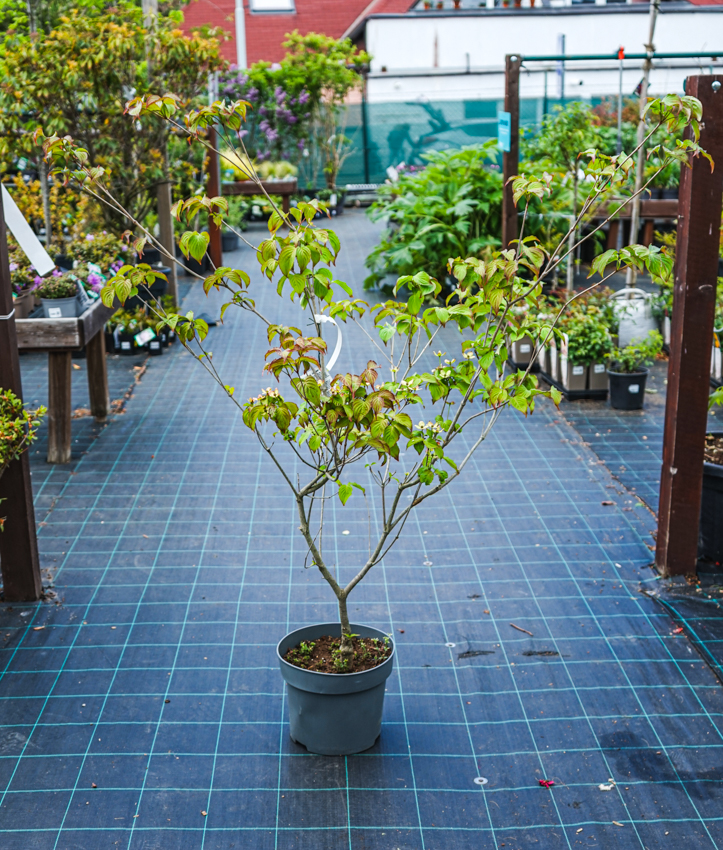
2 533 Kè

3 051,5 Kè
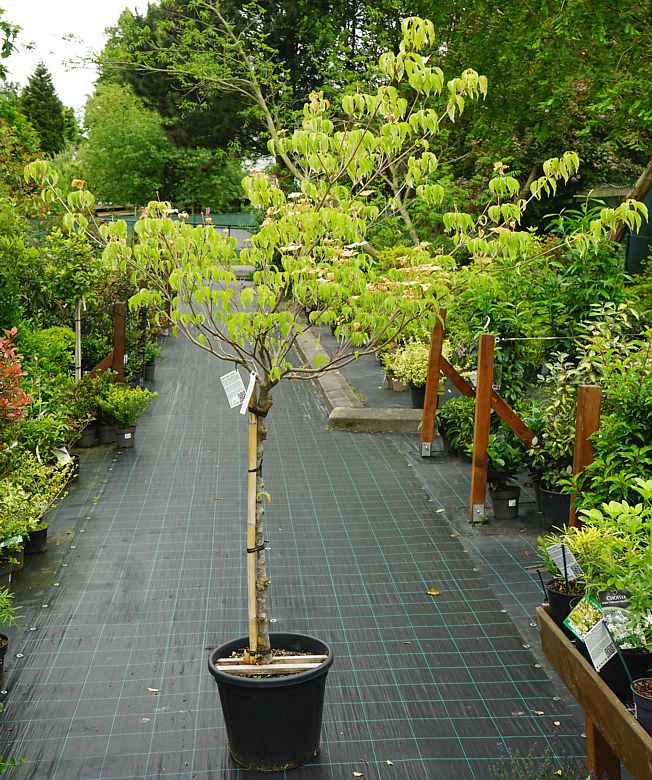
8 236,5 Kè

13 982,5 Kè
Goods are shipped all over Europe. For Russia and U.K. and for further details please read about SHIPPING OPTIONS HERE.
Are you interested in a serious discount for orders NOV-FEB? Check your options here.
THE PRICES INCLUDE VAT of 15%. For quick conversion you can use 1 CZK = approx. 0.04 EUR
- STANDARD QUALITY - Plants of this group are 1st class quality with number of branches and overall density adequate to their size and age, considering they were container grown.
- DE LUXE QUALITY - This label guarantees a luxurious quality of manually selected plants that, compared to their height and age, are exceptionally dense and beautiful.
- EXTRA - These plants are usually mature and bigger specimens with exceptional overall appearance.
- STANDARD (as described in the plant form) means a tree with a trunk of 190-210 cm and a crown at the top, unless specified differently. The commercial size for trees is their girth measured in the height of 1m from ground.
- HOBBY - These plants are of the same quality as our standard-quality plants but younger and therefore cheaper.
- SHRUB - a woody plant with branches growing bushy from the ground level.
- HALF-STANDARD or MINI-STANDARD - a small tree with shorter trunk, its size is usually specified.
- FEATHERED - These are trees with branches growing already from the base of the trunk and up along the stem.
- GRASSES and PERENNIALS - Sizes given usually read the diameter of the pot or the clump, as specified.

































